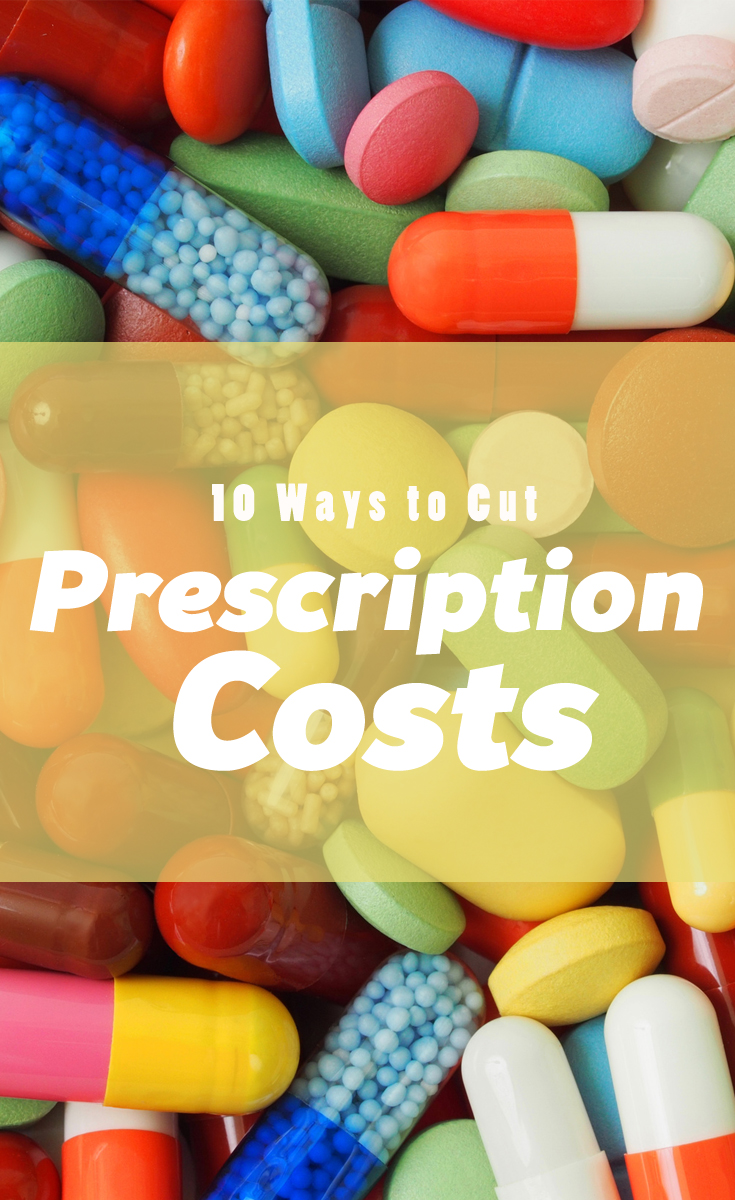 There was a time in the not-so-distant past in which my family took almost no medications. These days, that's not the case. It seems like one member of my family or another is always due for a refill of one of our daily prescriptions. It never ceases to amaze me just how quickly those prescription costs can add up.
There was a time in the not-so-distant past in which my family took almost no medications. These days, that's not the case. It seems like one member of my family or another is always due for a refill of one of our daily prescriptions. It never ceases to amaze me just how quickly those prescription costs can add up.
As much as I hate paying for meds, I know that keeping up with our pills is essential. Therefore, I've sought out ways to cut prescription costs so both our health and our wallets benefit.
-
Request Samples

Image source: static.newstyle-live.com Yes, free drug samples that pharmaceutical companies give to doctor's offices to distribute are nothing more than a marketing tool. That doesn't mean you can't benefit from them. Ask your doctor if there is a sample available for the new prescription you're being given. Using a sample for a few days gives you a period of time in which to “try before you buy,” so to speak.
-
Consider Over-the-counter Alternatives

Image source: 18674-presscdn.pagely.netdna-cdn.com It's possible that you can get by without a prescription-strength medication. You might be able to make do with a cheaper over-the-counter variety. Keep in mind that many OTC meds were originally prescription drugs. This is not a decision that you should make on your own though; go this route only if your doctor recommends it.
-
Use Generic Versions

Image source: portalgenteactiva.com Generic medications use equivalent formulas and meet the same safety standards as their name-brand counterparts. However, they are usually at least 30 percent cheaper. The cost savings can be significant: American consumers save as much as $10 billion a year by using generic drugs. Ask your doctor to prescribe a generic version of your medication. If you forget, you may be able to ask the pharmacy to switch it for you.
-
Seek Out Coupons

Image source: fthmb.tqn.com Manufacturers sometimes issue coupons with which you may be able to fill a brand-name prescription for less than a generic. You may be able to find these from your doctor, your pharmacist, magazine pages or manufacturer websites. Keep in mind, however, that your out-of-pocket cost will go back up once you run out of coupons, so this strategy may be better for prescriptions you take short-term only.
-
Use a Discount Program

Image source: fthmb.tqn.com Consumers without health insurance can still save on medication costs through discount card programs. The best way to benefit is to enroll in a free program. AARP, AAA and many state governments offer free cards to those who qualify.
If not, it may be tempting to pay the fee to become a member in your pharmacy's discount program. It's important to first make sure that you'll save enough over the course of the year to offset the dues.
-
Cut Pills in Half

Image source: pillcutter.com Oftentimes, a double-strength version of your pills won't cost much more than the strength you actually need. Ask your doctor if you can be prescribed the higher-strength version and cut the pills in half so the supply will last you twice as long. For example, if your daily dose is 50 milligrams, you may be able to take half of a 100-milligram pill each day.
Words of wisdom: Use this approach only under a doctor's guidance, and cut the meds with a pill splitter to ensure that it's done accurately.
-
Compare Prices at Various Pharmacies

Image source: d39-a.sdn.szn.cz Call around to see how much your medications will cost at different pharmacies. There are also websites and apps that allow you to compare prices. You may be surprised at the differences from one store to the next.
It's quite possible–although less convenient–that you'll find it worth splitting your various prescriptions among two or more pharmacies.
-
Ask for the Lowest Price

Image source: www.rd.com With a little digging, the tech at your favorite pharmacy may be able to find you some cost-saving options on your medications. It certainly doesn't hurt to ask. You may have the most success with this approach at independent pharmacies, where the pharmacists may have more decision-making power.
-
Use a Reputable Online Pharmacy

Image source: www.naet-asia.com Sometimes, the best price for your meds comes not from a pharmacy in your own town but from a mail-order service. These often provide a three-month supply of medication for the same co-pay price that you would pay at your local pharmacy for a one-month supply.
When ordering prescriptions by mail, use only a company that has been certified by the National Association of Boards of Pharmacy. You'll be able to identify this by the Verified Internet Pharmacy Practice Sites Seal.
-
Reevaluate Your Health Insurance

Image source: www.pastelosgb.com Most health insurance plans have their own formulary. That's the list of prescription medications that the plan will cover. Different drugs may fall into various tiers of coverage within the formulary.
Your plan's formulary can change from year to year. In fact, it may even change mid-year. Before your annual plan renewal, check the current formulary to evaluate costs for your regular prescriptions. You may find that another plan better meets your drug needs.
Generics are my tried-and-true savings plan, but I also like the idea of splitting double-strength pills in half.



